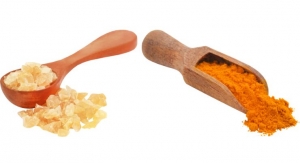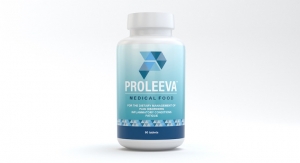David Mark, PhD04.01.07
What causes arthritis? Is it the wear and tear of all that "jumpin"? Are our parents to blame? The answer? Both. In an update to an article ("Who Owns this Joint?") that appeared in the October 2005 issue of Nutraceuticals World, new evidence for supplement/functional food ingredients is reviewed, plus why FDA rejected not one, but two applications for a qualified health claim for glucosamine.
Osteoarthritis (OA) feels like such a cause-and-effect disease that it comes as a shock to learn that 50-60% of hip, knee and hand OA is genetic 1-3. This fact is underutilized in promoting products intended to help maintain healthy joints. Understanding that OA runs in families could have the same product acceptance impact as realizing that high cholesterol is part diet and part familial.
Current estimates indicate that 20-25 million people in the U.S. have OA and at least the same number is afflicted with other arthritis conditions. Arthritis is the leading cause of long-tem disability. In fact, over two-thirds of current OA patients report they were physically active prior to their diagnosis, versus less than 15% afterwards. Many also find that OA leads to weight gains of 25-50 pounds, in turn exacerbating the arthritis. Sleep is also compromised by the pain of arthritis, and work and home life suffer. Estimates from 2003 were in excess of $80 billion for medical care expenditures and $47 billion in earning losses 1-3.
The dynamic of joint failure is both progressive and complex. Many people have measurable joint narrowing and bone changes at the joint surface without pain or loss of function, while others have disabling pain with minimal structural change. Risk of OA is higher in women than in men, and increases in both sexes with age. Prevalence is similar among whites and African-Americans, but African-Americans are more likely to have activity limitations, work limitations and severe joint pain compared to whites. Prevalence is lower among Hispanics compared to whites, but this may be an artifact of less access to medical care because Hispanics had a higher proportion of work limitations and severe joint pain 1,2.
Environment also matters. As an example, obesity strongly correlates with the development of OA. This means that the obesity epidemic of the 21st century will most likely have significant consequences on the development of OA across all populations and age groups. The effects of obesity are reversible: obese middle-aged adults with OA improved their WOMAC (Western Ontario and McMaster Osteoarthritis Index) function score after they lost 5% of body weight. Gait pattern, joint mal-alignment and low muscle strength may help explain why women are more prone than men. Further, competition in sports at the elite/ professional level definitely contributes to premature OA and a higher risk of OA, as does a career in unskilled labor such as housekeeping/janitorial services 1.
When Alan B. sees a penny he does not pick it up. Not in for a nickel, nor a dropped dime. For an espied quarter, he first makes sure a handhold is at the ready. The simple truth-Alan can't stand up from the floor without an assist. He stopped jogging at age 45 when years of running four to six miles a week bought him chronic knee soreness. A hard fall on the left knee in 2003 trashed his cartilage so that he still cannot kneel on that knee. Some mornings it's a real chore to get out of bed and walk down the stairs without wincing. There are bottles of ibuprofen, acetaminophen and aspirin in his medicine cabinet. He is worried about risking his health in his search to alleviate pain.
It is estimated that arthritis sufferers use one-third of all pain relief medications worldwide. What most consumers don't realize is that none of these medications have any effect on the underlying disease.
Store brand aspirin costs pennies a day. Ditto for acetaminophen, which is not a non-steroidal anti-inflammatory drug (NSAID), but has its own constellation of adverse effects. Prescription NSAIDS, including Celebrex (the last cyclooxygenase-2-COX-2-inhibitor left standing), cost up to dollars a day, and in combination with over-the-counter (OTC) pain relievers, represent a $10-15 billion dollar market. The real cost, however, includes medical complications. A review from 1997 estimated that for OA and rheumatoid arthritis (RA) patients annual adverse events included 103,000 hospitalizations and 16,500 deaths related to NSAIDS4. If those numbers were ever true-they were challenged as too high in a "Letter to the Editor" at the time (Morgan RW. NEJMed 1999;341:1397-98)-they are definitely much lower now as a consequence of increased co-prescription of medications to alleviate gastrointestinal symptoms, or judicious use of Celebrex. Yet, still, the potential for ulcerative or kidney complications, plus the growing understanding of increased risk of cardiovascular disease due to blood pressure elevation by almost all NSAIDS and/or clot promotion from the COX-2 inhibitors leaves a window wide open for pain relief directed dietary supplements.
Triterpenes: These plant-derived molecules represent a novel family of steroid-like compounds with anti-inflammatory and other properties. FlexNow Joint Formula is a triterpene-enriched extract from shea nuts. Currently, synthetic triterpenoids are being examined as potential drugs. At the moment, however, there is only one clinical trial (unpublished) of the FlexNow shea nut extract. The study demonstrated a reduction in post-exercise muscle tenderness and pain in the group consuming 3 grams per day compared to those who got the placebo. Results from an ongoing clinical trial in OA subjects are expected in late 2007. Acetyl-11-keto-beta-boswellic acid, the fraction of Boswellia serrata enriched in 5-LOXIN, is a pentacyclic terpenoid also shown to have the capacity to down-regulate NF-kappaB.
A recently published study by Sontakke, et al. looked at Boswellia serrata in OA of the knee and compared it to valdecoxib, a selective COX-2 inhibitor, in 66 patients over a period of six months. The patients were assessed by WOMAC scale at baseline and thereafter at monthly intervals until one month after drug discontinuation. Antero-posterior radiographs of affected knee joints were taken at baseline and after six months. In the boswellia group, the pain, stiffness and difficulty in performing daily activities showed statistically significant improvement with two months of therapy, which lasted until month after stopping the intervention. In the valdecoxib group, the statistically significant improvement in all parameters was reported after one month of therapy, but the effect persisted only as long as drug therapy continued. According to study authors, boswellia showed a slower onset of action, but the effect persisted even after stopping therapy. In contrast, the action of valdecoxib became evident faster, but waned rapidly after stopping treatment. This study was published in the February 2007 edition of the Indian Journal of Pharmacology.
Cetylated Fatty Acids: In Nutraceuticals World's October 2005 review of the joint health market, the research on cetylated fatty acids was considered "compelling" but more evidence was "warranted." More compelling evidence surfaced early this year when the results of a clinical trial, presented at the "Scripps 4th Annual Natural Supplements: Evidence-based Update Medical Conference," showed positive results for a cetylated fatty acid product that goes by the name Celadrin. This 60-day randomized, double-blind, placebo-controlled study was conducted on 93 subjects with OA of the knee. It included a two-week, single-blind placebo run-in/washout period. The subjects completed the two-week washout of all their current pain and anti-inflammatory medications before they were randomized to receive 60 days of active product or placebo. Subjects were evaluated at baseline, two weeks, four weeks, and eight weeks, during which they underwent functional evaluations and filled out scales and questionnaires. The subjects consumed four 430 mg capsules a day for a total of 1720 mg of the investigational product containing either 894 mg of cetylated fatty acid carbons or identical placebo. Outcomes included a six-minute walk as a functional measure of the severity of the knee OA and 11-point Visual Analog Scales (VAS) measuring pain and the impact on daily activities. After only two weeks, the Celadrin group exhibited a 19% increase (232 ft) in walk distance. By eight weeks, subjects in the Celadrin group experienced a 45% increase to 1720 ft (start distance was 1183 ft). Placebo faired worse than baseline by the end of study.
Hops Extract: As in beer? Alpha acids, iso-alpha acids and possibly beta acids are tentatively identified as the active pain relief compounds in hops extracts. Beer contains in the range of 20-40 mg alpha + iso-alpha per liter, perhaps a bit higher for IPA (India Pale Ale) beers. The branded hops extract ingredients IsoOxygene and Perluxan (same product, same company) are described as >30% alpha + iso-alpha and promoted as providing fast-acting pain relief, possibly through the mechanism of COX-2 inhibition. These ingredients are used in ranges between 500 and 2000 mg per day in various pain relief dietary supplements. The actual human evidence is preliminary. Single dose testing in healthy subjects showed COX-2 inhibition similar to ibuprofen, but there was no evaluation of pain relief. More testing for safety and efficacy is warranted.
Tart Cherries: Claims include arthritis pain relief, gout pain relief, anti-inflammation, antioxidant, anti-cancer, anti-insomnia, relief from fibromyalgia syndrome and reduced risk of heart disease. Compounds identified as having health value include anthocyanins, flavonoids, melatonin, perillyl alcohol and ellagic acid. The Cherry Marketing Institute (CMI) maintains a website, which provides newsletters and brochures on the health values of tart cherries5. Until recently, most of the health evidence was at the anecdotal stage (the oft-cited arthritis clinical evidence was from 1950)6. In late 2005, FDA issued Warning Letters to tart cherry juice and supplement suppliers to rein in health claims as unsubstantiated and unproven (most complied). Although not funded by CMI, 2006 witnessed the publication of a placebo-controlled clinical trial in which drinking tart cherry juice reduced post-exercise muscle strength loss and pain7. Pro sports teams are reportedly using the product. More research is expected. Jeff Manning, chief marketing officer for CMI, noted "Cherries are truly the 'new superfruit,' and are linked to many potential health benefits."
Pain Relief Blends: Combination products can contain five, 10, 15, or even 37 (!) ingredients. A partial list includes: barberry, skullcap, feverfew, ginger, grape seed extract, holy basil, hops extract, devil's claw and turmeric. Statements might refer to some of these as COX and lipoxygenase (LOX) inhibitors. The evidence supporting the ingredients may be taken from the scientific literature, but the amount in the product is almost always much less than was evaluated in any human study. Specific amounts are often hidden on the ingredient label by giving only a total weight for a "proprietary" blend. And often the evidence is based solely on in vitro or animal studies. For example, resveratrol is described as having anti-inflammatory function, yet to date no clinical trial (other than a one-day safety study) has appeared anywhere in the scientific literature.
Glucosamine and chondroitin are the bestknown examples of symptomatic slow-acting drugs [supplements] for OA (SysSADOA), sometimes referred to as disease modifying drugs for OA (DMOADS), but others continue to join the fray. Products in this category are expected to take weeks or even months to reduce pain and improve function in OA patients by providing raw material needed for cartilage repair and/or suppressing signaling mechanisms that cause cartilage catabolism.
Glucosamine Update: The Glucosamine Unum in Die Efficacy (GUIDE) Trial reported on once-a-day use of glucosamine sulfate at 1500 mg per day. For six months, over 300 patients with knee OA, a great majority women, received either placebo, glucosamine or acetaminophen. Scoring at the end of the study was by Lequesne Index, WOMAC and the OARSI-A responder criteria-three somewhat overlapping survey assessments of pain and function. Results were presented at the "American College of Rheumatology Conference" in late 2005, but as of March 2007 they have not been published in a peer-reviewed journal. Glucosamine scored better than placebo for all assessment methods, and patients used significantly less ibuprofen for pain relief. The glucosamine results were slightly (not significantly) better than acetaminophe8.
GAIT, the Gucosamine/Chondroitin Arthritis Intervention Trial, had more equivocal results. Unfortunately, this knee OA study was plagued by a very high response in the placebo group. Success was defined as a 20% reduction in [WOMAC scored] pain at 24 weeks. Sixty percent (!) in the placebo group reached this benchmark, 64% with glucosamine at 1500 mg per day, 65% with chondroitin at 1200 mg, and 66.5% with both. Celebrex achieved pain relief in 70% patients (i.e., not much better than placebo). For a small subset starting with moderate to severe OA, the glucosamine and chondroitin combination scored significantly better than placebo (79% success vs. 54%)9. Some of the GAIT subjects are continuing in a study looking at joint space narrowing, with results expected later this year.
Chondroitin Update: Not much has been published since a 2004 study by Uebelhart, et al. demonstrated improved function, less pain and less joint narrowing with chondroitin sulfate at 800 mg per day10. The GAIT results were not statistically significant for chondroitin alone at 1200 mg per day9. An observational study of 844 OA patients, mean age 66 years, reported that for those who had been using chondroitin for less than three months, 53% were also using pain relief medication (NSAIDS or other), while for those chondroitin users of more than three months duration, 44% were also currently using pain relief medications11.
Glucosamine Safety: Because glucosamine is an amino sugar derived from glucose, concerns have been raised in the scientific literature about the potential of glucosamine to stimulate insulin production, thus contributing to the development of insulin resistance. Intravenous glucosamine at high doses has been shown to interfere with glucose and insulin metabolism. In an unpublished study, 15 non-diabetic subjects who consumed 1500 mg per day of glucosamine sulfate had a significant increase in serum insulin at the end of the 12-week treatment period12. In contrast, Anderson's glucosamine safety review cites five clinical trials in which serum glucose was measured and none of them reported an increase13. Among these, Scroggie, et al. measured glycosylated hemoglobin in 22 diabetes patients who consumed 1500 mg per day of glucosamine HCl for 90 days, and there were no significant changes14. The Institute of Medicine (IOM) concluded in 2004 that according to available data there appears to be no evidence to suggest that glucosamine poses a substantial health risk in healthy, non-pregnant adults15. Due to lingering concerns, however, NIH/NCCAM decided to fund a clinical trial: "Effect of oral glucosamine on insulin and blood vessel activity in normal and obese people." It looked at whether glucosamine can cause or worsen insulin resistance, or change how blood vessels react to insulin. Subjects took glucosamine HCl at 1500 mg per day for six weeks. Neither lean nor obese subjects had worsened insulin resistance or endothelial dysfunction16. The new evidence strongly supports IOM's opinion that glucosamine does not appear to increase the risk of insulin resistance, and thus is safe for people with diabetes.
Methylsulfonylmethane (MSM): A key clinical trial with knee OA patients reached print in 2006. MSM intake was 6000 mg per day. Compared to placebo, some of the WOMAC assessments-pain and function-achieved statistically significant improvements17. This study is important because prior to this there have been only two MSM clinical trials: the small, unpublished trial on 2250 mg per day reported by Ronald Lawrence in The Miracle of MSM and the flawed and incompletely reported study by Usha et al. using a dose of 1500 mg per day18.
CynatineFLX: This soluble, digestible keratin protein extracted from the wool of sheep was granted a U.S. patent in February 2007. The New Zealand-based company behind the product continues to fund in vitro and animal research. In an ongoing study with horses, CynatineFLX feeding appears to improve joint health and mobility. The underlying theory for this product is that the high cysteine content of the solubilized protein will support tissue repair and have antioxidant and anti-inflammatory functions.
Combination Products: Combinations of glucosamine, chondroitin and MSM are common among branded and private label products. These usually contain either glucosamine and/or chondroitin at the amounts shown to be effective in clinical trials, plus a lesser amount of MSM. Newer product combinations add smaller amounts of other evidence-evolving ingredients, or combine pain relief ingredients with the SysSADOAs to promote the concept of rapid relief from pain, while waiting for the slower-acting substances to take effect. Combination ingredients currently on the market include black catechu, Chinese skullcap, collagen, ginger, hyaluronic acid and willow bark. The Schiff (Salt Lake City, UT) product Lubriflex3 incorporates several of these ingredients and in small clinical trials presented at conferences, but not yet published in peer-reviewed journals, was found to be faster and more effective than glucosamine alone.
Rheumatoid Arthritis Remedies: RA is an autoimmune and inflammatory disease affecting about 2.5 million people in the U.S. Women are affected two to three times more than men. There is strong evidence suggesting that omega 3 fatty acids found in fish oil may relieve symptoms of RA. A recent study demonstrated additional gains when olive oil at 9.6 ml per day was combined with fish oil omega 3 fatty acids at 3 grams per day19. NCCAM recently sponsored a trial investigating the combined effect of fish oil and borage oil, however, results of this 260-patient study are not expected until 2009. NCCAM's website contains a comprehensive review of complementary and alternative medical approaches to RA. (For more information, visit www.nccam.nih.gov/health/RA.)
Is sulfur the common denominator for many of these dietary supplements? MSM is clearly a sulfur delivery molecule. Some marketing efforts promote glucosamine sulfate as more effective than glucosamine hydrochloride (HCL), although there has never been a head-to-head comparison. In the aforementioned trials, GAIT used the hydrochloride form and GUIDE used the sulfate form. As current thinking is that the salt (sulfate or hydrochloride) disassociates from the glucosamine prior to absorption, any difference in performance would be due to the sulfur content.
Chondroitin sulfate and SAMe are sulfur-containing supplements with confirmed benefits for OA. Other sulfur-containing supplements, some with arthritis tie-ins, include: glutathione, alpha-lipoic acid, taurine, garlic and sources of sulfur-containing amino acids methionine and cysteine.
Soaking in sulfur hot springs is a traditional folk remedy for arthritis pain. Estimated adult intake, counting methionine and cysteine from food protein plus inorganic sulfur in foods, beverages and water, is on the order of 2-4 grams per day 20,21, so any product considered a sulfur delivery system would need to deliver a considerable additional amount to have an impact.
On October 7, 2004, FDA rejected two applications for permission to use health claim statements on the labeling of glucosamine dietary supplements. (Details from the application petitions to the rejection letters can be accessed at www.fda.gov by searching on "2004P-0059" or "2004P-0060.")
Health claims are intended to cover foods and supplements that reduce the risk of developing a disease. Evidence for treating or mitigating symptoms of an existing disease or condition, however, is specifically reserved for drugs. The Weider Nutrition International (Salt Lake City, UT) petition (2004P-0059) cited 231 publications in support for the proposed claims, including 47 human intervention trials. The FDA ruled that none of the 47 intervention studies were relevant to the proposed claims. Simply put, in the eyes of the FDA, the trials were on individuals who already had arthritis and thus the evidence was not relevant to the risk of healthy people developing arthritis. Beyond this wholesale rejection of the studies, the FDA further opined that some of the studies were so flawed in design and execution that they were not scientifically credible.
There has been some speculation that the FDA has a bias for food health claim applications over supplement applications. Lycopene, for example, was denied a qualified health claim as a supplement even though tomatoes were approved for a qualified health claim for certain cancers (2005).
If there is indeed any favoring, it probably has more to do with the nature of the evidence than an anti-supplement industry bias. Nutrient and food research can incorporate population studies geared toward maintaining health and thus reducing the risk of developing a disease or a pre-disease condition. Supplement evidence too often comes from after-the-diagnosis intervention trials. If the second part of GAIT confirms that glucosamine and/or chondroitin slow the loss of cartilage in knee joints then this could plausibly be part of a reapplication for maintenance of healthy joints-an acceptable approach to an FDA health claim.
Aching Baby Boomers want pain relief from arthritis products without encountering the scary black-boxed warnings found on NSAID labels. The FDA will be cautious about approving next generation pain relief products such as combined COX/LOX inhibitors without compelling safety evidence. As a treatment of last resort, surgical replacement of hip and knee joints will grow beyond the current 700,000 per year. Faster growth will also be seen in partial joint replacements and minimally invasive joint surface repairs, and in hyaluronic acid or cartilage cell auto-injections (cells removed, grown to large numbers in vitro, and re-injected).
For supplements, the future looks good. Supplements are widely accepted and supported by growing evidence-based science as providing pain relief or supporting joint health without the serious adverse affects of prescription and OTC drugs. Breaking out from intense competition among brands and private label products will require the credibility of well-designed and well-executed clinical trials.NW
About the author: David Mark, PhD, is president of dmark consulting LLC, a provider of research management services to functional food and dietary supplement companies. He can be reached at 978-897-0890; E-mail: david@dmarknutrition.com; Website: www.dmarknutrition.com.
Disclosure: Dr. Mark has dietary supplement clients that market products containing chondroitin, glucosamine, MSM, willow bark and fish oil.
References
1.Brandt KD, Felson DT, et al. Update of proceedings of the 2002 internationals workshop on osteoarthritis outcomes. J Rheumatol 2005;32:1132-59.
2.http://www.cdc.gov/arthritis/pressroom/index.htm. Center for Disease Control website, Arthritis Pressroom. Accessed January 30, 2007.
3.Hootman JM, Helmick CG. Projections of US prevalence of arthritis and associated activity limitations. Arthritis Rheum 2006;54:226-229.
4.Wolfe MM, Lichtenstein DR, Singh G. Gastrointestinal toxicity of non-steroidal anti-inflammatory drugs. New Eng J Med 1999;340:1888-99.
5. www.choosecherries.com. Cherry Marketing Institute.
6.Blau LW. Cherry diet control for gout and arthritis. Tex Rep Biol Med 1950;8:309-311.
7.Connolly DA, et al. Efficacy of a tart cherry juice blend in preventing the symptoms of muscle damage. Br J Sports Med 2006;40:679-83.
8.Herrero-Beaumont G, et al. Effects of glucosamine sulfate on 6-month control of knee osteoarthritis symptoms vs. placebo and acetaminophen: results from the Glucosamine Unum in Die Efficacy (GUIDE) trial. Amer Coll Rheum 2005: Abstract #1203.
9.Clegg DO, et al. Glucosamine, chondroitin sulfate, and the two in combination for painful knee osteoarthritis. N Eng J Med 2006;354:795-808.
10.Uebelhart D, et al. Intermittent treatment of knee osteoarthritis with oral chondroitin sulfate: a one-year, randomized, double-blind, multicenter study versus placebo. Osteoarthritis Cart 2004;12:269-276.
11.Lagnaoui R, Baumevielle M, et al. Less use of NSAIDS in long-term than in recent chondroitin sulphate users in osteoarthritis: a pharmacy-based observational study in France. Therapie 2006;61:341-346.
12.Almada AL, Harvey PW, Platt PJ. Effect of oral glucosamine sulfate upon fasting insulin resistance index (FIRI) in non-diabetic individuals. The FASEB Journal 2000;14:A750(abstract).
13.Anderson JW, Nicolosi RJ, Borzelleca JF. Glucosamine effects in humans: a review of effects on glucose metabolism, side effects, safety considerations and efficacy. Food Chem Toxicol 2005;43:187-201.
14.Scroggie DA, Albright A, Harris MD. The Effect of Glucosamine-Chondroitin Supplementation on Glycosylated Hemoglobin Levels in Patients With Type 2 Diabetes Mellitus: A Placebo-Controlled, Double-blinded, Randomized Clinical Trial. Arch Intern Med 2003;163:1587-90.
15.Prototype Monograph on Glucosamine, from: Dietary Supplement Ingredient Prototype Monographs, Institute of Medicine and National Research Council, The National Academies Press, Washington, DC. 2004.
16.Muniyappa R, Karne RJ, et al. Oral glucosamine for 6 weeks at standard doses does not cause or worsen insulin resistance or endothelial dysfunction in lean or obese subjects. Diabetes 2006;55:3142-50.
17.Kim LS, Axelrod LJ, et al. Efficacy of methylsulfonylmethane (MSM) in osteoarthritis pain of the knee: a pilot clinical trial. Osteoarthritis Cart 2006;14:286-294.
18.Usha PR, Naidu MUR. Randomized, double-blind, parallel, placebo-controlled study of oral glucosamine, methylsulfonylmethane and their combination in osteoarthritis. Clin Drug Invest 2004;24:353-363.
19.Berbert AA, Kondo CR, et al. Supplementation of fish oil and olive oil in patients with rheumatoid arthritis. J Nutr 2005;21:131-136.
20.Parcell S. Sulfur in human nutrition and applications in medicine. Alt Med Rev 2002;7:22-44.
21.Sulfate. IN: Dietary Reference Intakes for Water, Potassium, Sodium, Chloride, and Sulfate. Institute of Medicine, The National Academies Press, Washington, DC. Pages 424-448. 2005.
Log on, learn more @ nutraceuticalsworld.com:
Looking for more information on collagen and hyaluronic acid? Visit the April edition of NW online to see our web exclusives on these two ingredient categories-find out how their impact stretches far beyond joint health. The April online edition will also feature a listing of joint health ingredient suppliers.
Who Gets Arthritis?
Osteoarthritis (OA) feels like such a cause-and-effect disease that it comes as a shock to learn that 50-60% of hip, knee and hand OA is genetic 1-3. This fact is underutilized in promoting products intended to help maintain healthy joints. Understanding that OA runs in families could have the same product acceptance impact as realizing that high cholesterol is part diet and part familial.
Current estimates indicate that 20-25 million people in the U.S. have OA and at least the same number is afflicted with other arthritis conditions. Arthritis is the leading cause of long-tem disability. In fact, over two-thirds of current OA patients report they were physically active prior to their diagnosis, versus less than 15% afterwards. Many also find that OA leads to weight gains of 25-50 pounds, in turn exacerbating the arthritis. Sleep is also compromised by the pain of arthritis, and work and home life suffer. Estimates from 2003 were in excess of $80 billion for medical care expenditures and $47 billion in earning losses 1-3.
The dynamic of joint failure is both progressive and complex. Many people have measurable joint narrowing and bone changes at the joint surface without pain or loss of function, while others have disabling pain with minimal structural change. Risk of OA is higher in women than in men, and increases in both sexes with age. Prevalence is similar among whites and African-Americans, but African-Americans are more likely to have activity limitations, work limitations and severe joint pain compared to whites. Prevalence is lower among Hispanics compared to whites, but this may be an artifact of less access to medical care because Hispanics had a higher proportion of work limitations and severe joint pain 1,2.
Environment also matters. As an example, obesity strongly correlates with the development of OA. This means that the obesity epidemic of the 21st century will most likely have significant consequences on the development of OA across all populations and age groups. The effects of obesity are reversible: obese middle-aged adults with OA improved their WOMAC (Western Ontario and McMaster Osteoarthritis Index) function score after they lost 5% of body weight. Gait pattern, joint mal-alignment and low muscle strength may help explain why women are more prone than men. Further, competition in sports at the elite/ professional level definitely contributes to premature OA and a higher risk of OA, as does a career in unskilled labor such as housekeeping/janitorial services 1.
The Pain, Boss, the Pain
When Alan B. sees a penny he does not pick it up. Not in for a nickel, nor a dropped dime. For an espied quarter, he first makes sure a handhold is at the ready. The simple truth-Alan can't stand up from the floor without an assist. He stopped jogging at age 45 when years of running four to six miles a week bought him chronic knee soreness. A hard fall on the left knee in 2003 trashed his cartilage so that he still cannot kneel on that knee. Some mornings it's a real chore to get out of bed and walk down the stairs without wincing. There are bottles of ibuprofen, acetaminophen and aspirin in his medicine cabinet. He is worried about risking his health in his search to alleviate pain.
It is estimated that arthritis sufferers use one-third of all pain relief medications worldwide. What most consumers don't realize is that none of these medications have any effect on the underlying disease.
Store brand aspirin costs pennies a day. Ditto for acetaminophen, which is not a non-steroidal anti-inflammatory drug (NSAID), but has its own constellation of adverse effects. Prescription NSAIDS, including Celebrex (the last cyclooxygenase-2-COX-2-inhibitor left standing), cost up to dollars a day, and in combination with over-the-counter (OTC) pain relievers, represent a $10-15 billion dollar market. The real cost, however, includes medical complications. A review from 1997 estimated that for OA and rheumatoid arthritis (RA) patients annual adverse events included 103,000 hospitalizations and 16,500 deaths related to NSAIDS4. If those numbers were ever true-they were challenged as too high in a "Letter to the Editor" at the time (Morgan RW. NEJMed 1999;341:1397-98)-they are definitely much lower now as a consequence of increased co-prescription of medications to alleviate gastrointestinal symptoms, or judicious use of Celebrex. Yet, still, the potential for ulcerative or kidney complications, plus the growing understanding of increased risk of cardiovascular disease due to blood pressure elevation by almost all NSAIDS and/or clot promotion from the COX-2 inhibitors leaves a window wide open for pain relief directed dietary supplements.
Pain Alternatives
Triterpenes: These plant-derived molecules represent a novel family of steroid-like compounds with anti-inflammatory and other properties. FlexNow Joint Formula is a triterpene-enriched extract from shea nuts. Currently, synthetic triterpenoids are being examined as potential drugs. At the moment, however, there is only one clinical trial (unpublished) of the FlexNow shea nut extract. The study demonstrated a reduction in post-exercise muscle tenderness and pain in the group consuming 3 grams per day compared to those who got the placebo. Results from an ongoing clinical trial in OA subjects are expected in late 2007. Acetyl-11-keto-beta-boswellic acid, the fraction of Boswellia serrata enriched in 5-LOXIN, is a pentacyclic terpenoid also shown to have the capacity to down-regulate NF-kappaB.
A recently published study by Sontakke, et al. looked at Boswellia serrata in OA of the knee and compared it to valdecoxib, a selective COX-2 inhibitor, in 66 patients over a period of six months. The patients were assessed by WOMAC scale at baseline and thereafter at monthly intervals until one month after drug discontinuation. Antero-posterior radiographs of affected knee joints were taken at baseline and after six months. In the boswellia group, the pain, stiffness and difficulty in performing daily activities showed statistically significant improvement with two months of therapy, which lasted until month after stopping the intervention. In the valdecoxib group, the statistically significant improvement in all parameters was reported after one month of therapy, but the effect persisted only as long as drug therapy continued. According to study authors, boswellia showed a slower onset of action, but the effect persisted even after stopping therapy. In contrast, the action of valdecoxib became evident faster, but waned rapidly after stopping treatment. This study was published in the February 2007 edition of the Indian Journal of Pharmacology.
Cetylated Fatty Acids: In Nutraceuticals World's October 2005 review of the joint health market, the research on cetylated fatty acids was considered "compelling" but more evidence was "warranted." More compelling evidence surfaced early this year when the results of a clinical trial, presented at the "Scripps 4th Annual Natural Supplements: Evidence-based Update Medical Conference," showed positive results for a cetylated fatty acid product that goes by the name Celadrin. This 60-day randomized, double-blind, placebo-controlled study was conducted on 93 subjects with OA of the knee. It included a two-week, single-blind placebo run-in/washout period. The subjects completed the two-week washout of all their current pain and anti-inflammatory medications before they were randomized to receive 60 days of active product or placebo. Subjects were evaluated at baseline, two weeks, four weeks, and eight weeks, during which they underwent functional evaluations and filled out scales and questionnaires. The subjects consumed four 430 mg capsules a day for a total of 1720 mg of the investigational product containing either 894 mg of cetylated fatty acid carbons or identical placebo. Outcomes included a six-minute walk as a functional measure of the severity of the knee OA and 11-point Visual Analog Scales (VAS) measuring pain and the impact on daily activities. After only two weeks, the Celadrin group exhibited a 19% increase (232 ft) in walk distance. By eight weeks, subjects in the Celadrin group experienced a 45% increase to 1720 ft (start distance was 1183 ft). Placebo faired worse than baseline by the end of study.
Hops Extract: As in beer? Alpha acids, iso-alpha acids and possibly beta acids are tentatively identified as the active pain relief compounds in hops extracts. Beer contains in the range of 20-40 mg alpha + iso-alpha per liter, perhaps a bit higher for IPA (India Pale Ale) beers. The branded hops extract ingredients IsoOxygene and Perluxan (same product, same company) are described as >30% alpha + iso-alpha and promoted as providing fast-acting pain relief, possibly through the mechanism of COX-2 inhibition. These ingredients are used in ranges between 500 and 2000 mg per day in various pain relief dietary supplements. The actual human evidence is preliminary. Single dose testing in healthy subjects showed COX-2 inhibition similar to ibuprofen, but there was no evaluation of pain relief. More testing for safety and efficacy is warranted.
Tart Cherries: Claims include arthritis pain relief, gout pain relief, anti-inflammation, antioxidant, anti-cancer, anti-insomnia, relief from fibromyalgia syndrome and reduced risk of heart disease. Compounds identified as having health value include anthocyanins, flavonoids, melatonin, perillyl alcohol and ellagic acid. The Cherry Marketing Institute (CMI) maintains a website, which provides newsletters and brochures on the health values of tart cherries5. Until recently, most of the health evidence was at the anecdotal stage (the oft-cited arthritis clinical evidence was from 1950)6. In late 2005, FDA issued Warning Letters to tart cherry juice and supplement suppliers to rein in health claims as unsubstantiated and unproven (most complied). Although not funded by CMI, 2006 witnessed the publication of a placebo-controlled clinical trial in which drinking tart cherry juice reduced post-exercise muscle strength loss and pain7. Pro sports teams are reportedly using the product. More research is expected. Jeff Manning, chief marketing officer for CMI, noted "Cherries are truly the 'new superfruit,' and are linked to many potential health benefits."
Pain Relief Blends: Combination products can contain five, 10, 15, or even 37 (!) ingredients. A partial list includes: barberry, skullcap, feverfew, ginger, grape seed extract, holy basil, hops extract, devil's claw and turmeric. Statements might refer to some of these as COX and lipoxygenase (LOX) inhibitors. The evidence supporting the ingredients may be taken from the scientific literature, but the amount in the product is almost always much less than was evaluated in any human study. Specific amounts are often hidden on the ingredient label by giving only a total weight for a "proprietary" blend. And often the evidence is based solely on in vitro or animal studies. For example, resveratrol is described as having anti-inflammatory function, yet to date no clinical trial (other than a one-day safety study) has appeared anywhere in the scientific literature.
New Research for SysSADOA
Glucosamine and chondroitin are the bestknown examples of symptomatic slow-acting drugs [supplements] for OA (SysSADOA), sometimes referred to as disease modifying drugs for OA (DMOADS), but others continue to join the fray. Products in this category are expected to take weeks or even months to reduce pain and improve function in OA patients by providing raw material needed for cartilage repair and/or suppressing signaling mechanisms that cause cartilage catabolism.
Glucosamine Update: The Glucosamine Unum in Die Efficacy (GUIDE) Trial reported on once-a-day use of glucosamine sulfate at 1500 mg per day. For six months, over 300 patients with knee OA, a great majority women, received either placebo, glucosamine or acetaminophen. Scoring at the end of the study was by Lequesne Index, WOMAC and the OARSI-A responder criteria-three somewhat overlapping survey assessments of pain and function. Results were presented at the "American College of Rheumatology Conference" in late 2005, but as of March 2007 they have not been published in a peer-reviewed journal. Glucosamine scored better than placebo for all assessment methods, and patients used significantly less ibuprofen for pain relief. The glucosamine results were slightly (not significantly) better than acetaminophe8.
GAIT, the Gucosamine/Chondroitin Arthritis Intervention Trial, had more equivocal results. Unfortunately, this knee OA study was plagued by a very high response in the placebo group. Success was defined as a 20% reduction in [WOMAC scored] pain at 24 weeks. Sixty percent (!) in the placebo group reached this benchmark, 64% with glucosamine at 1500 mg per day, 65% with chondroitin at 1200 mg, and 66.5% with both. Celebrex achieved pain relief in 70% patients (i.e., not much better than placebo). For a small subset starting with moderate to severe OA, the glucosamine and chondroitin combination scored significantly better than placebo (79% success vs. 54%)9. Some of the GAIT subjects are continuing in a study looking at joint space narrowing, with results expected later this year.
Chondroitin Update: Not much has been published since a 2004 study by Uebelhart, et al. demonstrated improved function, less pain and less joint narrowing with chondroitin sulfate at 800 mg per day10. The GAIT results were not statistically significant for chondroitin alone at 1200 mg per day9. An observational study of 844 OA patients, mean age 66 years, reported that for those who had been using chondroitin for less than three months, 53% were also using pain relief medication (NSAIDS or other), while for those chondroitin users of more than three months duration, 44% were also currently using pain relief medications11.
Glucosamine Safety: Because glucosamine is an amino sugar derived from glucose, concerns have been raised in the scientific literature about the potential of glucosamine to stimulate insulin production, thus contributing to the development of insulin resistance. Intravenous glucosamine at high doses has been shown to interfere with glucose and insulin metabolism. In an unpublished study, 15 non-diabetic subjects who consumed 1500 mg per day of glucosamine sulfate had a significant increase in serum insulin at the end of the 12-week treatment period12. In contrast, Anderson's glucosamine safety review cites five clinical trials in which serum glucose was measured and none of them reported an increase13. Among these, Scroggie, et al. measured glycosylated hemoglobin in 22 diabetes patients who consumed 1500 mg per day of glucosamine HCl for 90 days, and there were no significant changes14. The Institute of Medicine (IOM) concluded in 2004 that according to available data there appears to be no evidence to suggest that glucosamine poses a substantial health risk in healthy, non-pregnant adults15. Due to lingering concerns, however, NIH/NCCAM decided to fund a clinical trial: "Effect of oral glucosamine on insulin and blood vessel activity in normal and obese people." It looked at whether glucosamine can cause or worsen insulin resistance, or change how blood vessels react to insulin. Subjects took glucosamine HCl at 1500 mg per day for six weeks. Neither lean nor obese subjects had worsened insulin resistance or endothelial dysfunction16. The new evidence strongly supports IOM's opinion that glucosamine does not appear to increase the risk of insulin resistance, and thus is safe for people with diabetes.
Methylsulfonylmethane (MSM): A key clinical trial with knee OA patients reached print in 2006. MSM intake was 6000 mg per day. Compared to placebo, some of the WOMAC assessments-pain and function-achieved statistically significant improvements17. This study is important because prior to this there have been only two MSM clinical trials: the small, unpublished trial on 2250 mg per day reported by Ronald Lawrence in The Miracle of MSM and the flawed and incompletely reported study by Usha et al. using a dose of 1500 mg per day18.
CynatineFLX: This soluble, digestible keratin protein extracted from the wool of sheep was granted a U.S. patent in February 2007. The New Zealand-based company behind the product continues to fund in vitro and animal research. In an ongoing study with horses, CynatineFLX feeding appears to improve joint health and mobility. The underlying theory for this product is that the high cysteine content of the solubilized protein will support tissue repair and have antioxidant and anti-inflammatory functions.
Combination Products: Combinations of glucosamine, chondroitin and MSM are common among branded and private label products. These usually contain either glucosamine and/or chondroitin at the amounts shown to be effective in clinical trials, plus a lesser amount of MSM. Newer product combinations add smaller amounts of other evidence-evolving ingredients, or combine pain relief ingredients with the SysSADOAs to promote the concept of rapid relief from pain, while waiting for the slower-acting substances to take effect. Combination ingredients currently on the market include black catechu, Chinese skullcap, collagen, ginger, hyaluronic acid and willow bark. The Schiff (Salt Lake City, UT) product Lubriflex3 incorporates several of these ingredients and in small clinical trials presented at conferences, but not yet published in peer-reviewed journals, was found to be faster and more effective than glucosamine alone.
Rheumatoid Arthritis Remedies: RA is an autoimmune and inflammatory disease affecting about 2.5 million people in the U.S. Women are affected two to three times more than men. There is strong evidence suggesting that omega 3 fatty acids found in fish oil may relieve symptoms of RA. A recent study demonstrated additional gains when olive oil at 9.6 ml per day was combined with fish oil omega 3 fatty acids at 3 grams per day19. NCCAM recently sponsored a trial investigating the combined effect of fish oil and borage oil, however, results of this 260-patient study are not expected until 2009. NCCAM's website contains a comprehensive review of complementary and alternative medical approaches to RA. (For more information, visit www.nccam.nih.gov/health/RA.)
All Sulfur, All the Time?
Is sulfur the common denominator for many of these dietary supplements? MSM is clearly a sulfur delivery molecule. Some marketing efforts promote glucosamine sulfate as more effective than glucosamine hydrochloride (HCL), although there has never been a head-to-head comparison. In the aforementioned trials, GAIT used the hydrochloride form and GUIDE used the sulfate form. As current thinking is that the salt (sulfate or hydrochloride) disassociates from the glucosamine prior to absorption, any difference in performance would be due to the sulfur content.
Chondroitin sulfate and SAMe are sulfur-containing supplements with confirmed benefits for OA. Other sulfur-containing supplements, some with arthritis tie-ins, include: glutathione, alpha-lipoic acid, taurine, garlic and sources of sulfur-containing amino acids methionine and cysteine.
Soaking in sulfur hot springs is a traditional folk remedy for arthritis pain. Estimated adult intake, counting methionine and cysteine from food protein plus inorganic sulfur in foods, beverages and water, is on the order of 2-4 grams per day 20,21, so any product considered a sulfur delivery system would need to deliver a considerable additional amount to have an impact.
FDA's Qualified Health Claim Rejection for Glucosamine
On October 7, 2004, FDA rejected two applications for permission to use health claim statements on the labeling of glucosamine dietary supplements. (Details from the application petitions to the rejection letters can be accessed at www.fda.gov by searching on "2004P-0059" or "2004P-0060.")
Health claims are intended to cover foods and supplements that reduce the risk of developing a disease. Evidence for treating or mitigating symptoms of an existing disease or condition, however, is specifically reserved for drugs. The Weider Nutrition International (Salt Lake City, UT) petition (2004P-0059) cited 231 publications in support for the proposed claims, including 47 human intervention trials. The FDA ruled that none of the 47 intervention studies were relevant to the proposed claims. Simply put, in the eyes of the FDA, the trials were on individuals who already had arthritis and thus the evidence was not relevant to the risk of healthy people developing arthritis. Beyond this wholesale rejection of the studies, the FDA further opined that some of the studies were so flawed in design and execution that they were not scientifically credible.
There has been some speculation that the FDA has a bias for food health claim applications over supplement applications. Lycopene, for example, was denied a qualified health claim as a supplement even though tomatoes were approved for a qualified health claim for certain cancers (2005).
If there is indeed any favoring, it probably has more to do with the nature of the evidence than an anti-supplement industry bias. Nutrient and food research can incorporate population studies geared toward maintaining health and thus reducing the risk of developing a disease or a pre-disease condition. Supplement evidence too often comes from after-the-diagnosis intervention trials. If the second part of GAIT confirms that glucosamine and/or chondroitin slow the loss of cartilage in knee joints then this could plausibly be part of a reapplication for maintenance of healthy joints-an acceptable approach to an FDA health claim.
Conclusions
Aching Baby Boomers want pain relief from arthritis products without encountering the scary black-boxed warnings found on NSAID labels. The FDA will be cautious about approving next generation pain relief products such as combined COX/LOX inhibitors without compelling safety evidence. As a treatment of last resort, surgical replacement of hip and knee joints will grow beyond the current 700,000 per year. Faster growth will also be seen in partial joint replacements and minimally invasive joint surface repairs, and in hyaluronic acid or cartilage cell auto-injections (cells removed, grown to large numbers in vitro, and re-injected).
For supplements, the future looks good. Supplements are widely accepted and supported by growing evidence-based science as providing pain relief or supporting joint health without the serious adverse affects of prescription and OTC drugs. Breaking out from intense competition among brands and private label products will require the credibility of well-designed and well-executed clinical trials.NW
About the author: David Mark, PhD, is president of dmark consulting LLC, a provider of research management services to functional food and dietary supplement companies. He can be reached at 978-897-0890; E-mail: david@dmarknutrition.com; Website: www.dmarknutrition.com.
Disclosure: Dr. Mark has dietary supplement clients that market products containing chondroitin, glucosamine, MSM, willow bark and fish oil.
References
1.Brandt KD, Felson DT, et al. Update of proceedings of the 2002 internationals workshop on osteoarthritis outcomes. J Rheumatol 2005;32:1132-59.
2.http://www.cdc.gov/arthritis/pressroom/index.htm. Center for Disease Control website, Arthritis Pressroom. Accessed January 30, 2007.
3.Hootman JM, Helmick CG. Projections of US prevalence of arthritis and associated activity limitations. Arthritis Rheum 2006;54:226-229.
4.Wolfe MM, Lichtenstein DR, Singh G. Gastrointestinal toxicity of non-steroidal anti-inflammatory drugs. New Eng J Med 1999;340:1888-99.
5. www.choosecherries.com. Cherry Marketing Institute.
6.Blau LW. Cherry diet control for gout and arthritis. Tex Rep Biol Med 1950;8:309-311.
7.Connolly DA, et al. Efficacy of a tart cherry juice blend in preventing the symptoms of muscle damage. Br J Sports Med 2006;40:679-83.
8.Herrero-Beaumont G, et al. Effects of glucosamine sulfate on 6-month control of knee osteoarthritis symptoms vs. placebo and acetaminophen: results from the Glucosamine Unum in Die Efficacy (GUIDE) trial. Amer Coll Rheum 2005: Abstract #1203.
9.Clegg DO, et al. Glucosamine, chondroitin sulfate, and the two in combination for painful knee osteoarthritis. N Eng J Med 2006;354:795-808.
10.Uebelhart D, et al. Intermittent treatment of knee osteoarthritis with oral chondroitin sulfate: a one-year, randomized, double-blind, multicenter study versus placebo. Osteoarthritis Cart 2004;12:269-276.
11.Lagnaoui R, Baumevielle M, et al. Less use of NSAIDS in long-term than in recent chondroitin sulphate users in osteoarthritis: a pharmacy-based observational study in France. Therapie 2006;61:341-346.
12.Almada AL, Harvey PW, Platt PJ. Effect of oral glucosamine sulfate upon fasting insulin resistance index (FIRI) in non-diabetic individuals. The FASEB Journal 2000;14:A750(abstract).
13.Anderson JW, Nicolosi RJ, Borzelleca JF. Glucosamine effects in humans: a review of effects on glucose metabolism, side effects, safety considerations and efficacy. Food Chem Toxicol 2005;43:187-201.
14.Scroggie DA, Albright A, Harris MD. The Effect of Glucosamine-Chondroitin Supplementation on Glycosylated Hemoglobin Levels in Patients With Type 2 Diabetes Mellitus: A Placebo-Controlled, Double-blinded, Randomized Clinical Trial. Arch Intern Med 2003;163:1587-90.
15.Prototype Monograph on Glucosamine, from: Dietary Supplement Ingredient Prototype Monographs, Institute of Medicine and National Research Council, The National Academies Press, Washington, DC. 2004.
16.Muniyappa R, Karne RJ, et al. Oral glucosamine for 6 weeks at standard doses does not cause or worsen insulin resistance or endothelial dysfunction in lean or obese subjects. Diabetes 2006;55:3142-50.
17.Kim LS, Axelrod LJ, et al. Efficacy of methylsulfonylmethane (MSM) in osteoarthritis pain of the knee: a pilot clinical trial. Osteoarthritis Cart 2006;14:286-294.
18.Usha PR, Naidu MUR. Randomized, double-blind, parallel, placebo-controlled study of oral glucosamine, methylsulfonylmethane and their combination in osteoarthritis. Clin Drug Invest 2004;24:353-363.
19.Berbert AA, Kondo CR, et al. Supplementation of fish oil and olive oil in patients with rheumatoid arthritis. J Nutr 2005;21:131-136.
20.Parcell S. Sulfur in human nutrition and applications in medicine. Alt Med Rev 2002;7:22-44.
21.Sulfate. IN: Dietary Reference Intakes for Water, Potassium, Sodium, Chloride, and Sulfate. Institute of Medicine, The National Academies Press, Washington, DC. Pages 424-448. 2005.
Log on, learn more @ nutraceuticalsworld.com:
Looking for more information on collagen and hyaluronic acid? Visit the April edition of NW online to see our web exclusives on these two ingredient categories-find out how their impact stretches far beyond joint health. The April online edition will also feature a listing of joint health ingredient suppliers.



























